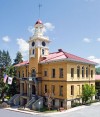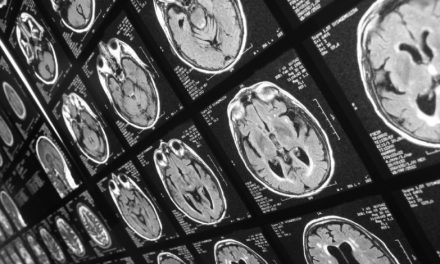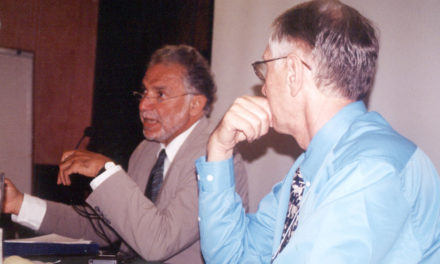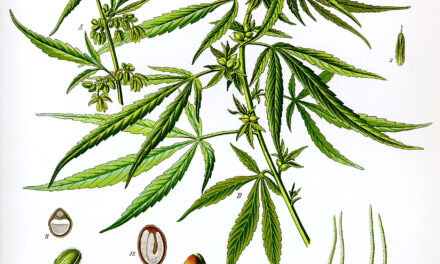Mikuriya in Sonora
By Fred Gardner I’ve been assembling material for our online anthology. This piece is from September, 1998, when Tod Mikuriya, MD, was virtually the only doctor in California known to readily approve marijuana use for conditions other than AIDS and cancer. The police, judges, and politicians were refusing to implement Proposition 215, and no one but Tod and a few defense lawyers were calling them out.
 At 5 a.m. on a Friday morning in late September, Tod Mikuriya, MD, leaves his house in the Berkeley hills to drive to Sonora to testify in what he sarcastically calls “a wrong metabolite syndrome case.” The defendant, William D., is a man in his 50s who tested positive for THC back in March, one day after Mikuriya had recommended that he use marijuana for relief of chronic pain and as an alternative to alcohol. “He suffers from alcoholic encepalopathy, including cerebellar degeneration with obvious ataxia when he walks,” says Mikuriya, who interviewed William D. in Oakland last spring. (Some people call his condition “wet brain.”)
At 5 a.m. on a Friday morning in late September, Tod Mikuriya, MD, leaves his house in the Berkeley hills to drive to Sonora to testify in what he sarcastically calls “a wrong metabolite syndrome case.” The defendant, William D., is a man in his 50s who tested positive for THC back in March, one day after Mikuriya had recommended that he use marijuana for relief of chronic pain and as an alternative to alcohol. “He suffers from alcoholic encepalopathy, including cerebellar degeneration with obvious ataxia when he walks,” says Mikuriya, who interviewed William D. in Oakland last spring. (Some people call his condition “wet brain.”)
William D.’s original crime was cultivation of three plants —“for self-medication,” according to Mikuriya. “But in most of the 215 cases people plea bargain their rights away. They’re facing time, they’re scared, and they take probation with the usual conditions —meaning you give up every civil right. They can come by any hour of the day or night and do a full search with dogs, trash your apartment…”William accepted diversion and had to report to a substance abuse program for urine testing. He tested clean for eight months. After his counselor, Travis S. Busey, Jr., told William that a doctor’s recommendation would entitle him to use marijuana, he drove to Oakland and got one from Dr. Mikuriya. When he then tested positive he was violated, as they say, and found himself facing prison time. For three plants.
“ It’s just blatant non-compliance with the law,” says Mikuriya, who, at 62, still seems slightly surprised that not everybody took their civics lessons as seriously as he did. “You have the government blocking safe, affordable access when the law says it has to ensure safe and affordable access. They’re acting directly contrary to the wording of the law and the will of the people.” The law he refers to is section 11362.5 of the California Health and Safety Code —born as Prop 215.
Mikuriya was not keen to make the three-hour drive to the Sierra foothills. He’d had to cancel appointments because Tuolomne County Superior Court Judge Eric DuTemple —a Republican, like every superior court judge appointed in California in the last 16 years— had refused to accept into evidence a written declaration confirming and explaining Mikuriya’s recommendation of mj to William D.. DuTemple had also rebuffed the public defender’s attempt to have Mikuriya designated an expert witness —which would have meant remuneration of $400 an hour, the going rate for medical expert testimony.
Mikuriya has been denied expert witness status by judges in several other counties and is filing complaints against them with a state agency called the Commission on Judicial Performance. He testified without remuneration at a hearing in Humboldt for Pebbles Trippet, and will do so again at her trial. (It’s scheduled for Oct. 19. The four charges against Trippet are possession and transportation, which she doesn’t deny, and intent to sell and driving while impaired, which she denies unequivocally.
Because threats from the federal government have left so few doctors in California willing to provide written recommendations for patients with conditions covered by Prop 215, more than 1,000 people have sought out Mikuriya; he has given the green light to some 900. “I’ve never induced anybody to take cannabis,” he says. “In my contact with patients I passively listen and trust what they tell me.”
Attorney General Lungren’s office has singled out Mikuriya for scrutiny.
Last September John Gordiner, the senior assistant whom Lungren assigned to enforce his “narrow interpretation” of Prop 215, sent a memo to the District Attorneys of California’s 58 counties asking to be informed of any cases involving Mikuriya. Gordnier —who provides the local DAs with lines of argument and motions to file in prosecuting 215 cases— deposed Mikuriya at great length in connection with People v. Peron last summer. Last month, when he was leading a raiding party on a garden in Red Bluff, Gordnier ridiculed the written recommendations from Mikuriya that the growers produced as their bona fides.
“So far the harassment I’ve received has been kind of soft-core,” says Mikuriya. “Attacks on my credibility, forcing me to make drives like this… But I wouldn’t be surprised if Ayatollah Lungren issued a fatweh against me before he leaves office.” Add Lungren lore: one of Dan’s closest friends at Notre Dame was a classmate named Eddie de Bartolo, Jr. They graduated in ‘68. Dan managed to avoid Vietnam by claiming bad knees. Since his father was Richard Nixon’s personal physician, his draft board probably didn’t question his letter of diagnosis as closely as Lungren’s deputies now question the letters Mikuriya writes for poor, sick people like William D.
Mikuriya is not unprepared for his showdown with the DA in Sonora. He has been studying cannabis his entire career. He grew up in Eastern Pennsylvania. His mother, who shaped his politics, was a Quaker. “The Quakers were proprietors of the Underground Railway, I’m proud to say. The cannabis prohibition has the same dynamics as the bigotry and racism my family and I experienced starting on December 7, 1941, when we were transformed from normal-but-different people into war-criminal surrogates.” He attended the classy George School, flunked out of Haverford, graduated from Reed, then went to Temple University School of Medicine, where he read through all the pre-prohibition literature on cannabis. He graduated in ‘62 and did his residency at Mendocino State Hospital in Talmadge. In 1967 he became the first director of marijuana research at the National Institute of Mental Health. He left when he was instructed to look only for negative effects. He came out to Berkeley, where he has been in private practice for three decades.
When Dennis Peron opened the first cannabis buyers club in San Francisco, Mikuriya saw “a unique research opportunity,” signed on as medical director, and began interviewing patients. For what conditions were people actually using marijuana? In what forms and at what dosages? What results were they getting? How did this new data compare to reports in the medical literature from the years when cannabis was a legally prescribable drug? Mikuriya developed a registration form designed to collect and organize the members’ anecdotal evidence. It included a list of more than 50 conditions for which cannabis provided relief according to the pre-prohibition literature, updated to include “conditions that people who seemed to be credible had been treating with marijuana.”
Versions of Mikuriya’s form are being used by most of the surviving clubs, including the Oakland Cannabis Coop. He’s still collecting data and is the de facto medical director of the clubs in Hayward, Arcata and San Francisco (CHAMP). Since the passage of Prop 215 in November ‘96, he has made three trips to Arcata to see people who want to use marijuana for medical purposes. Mikuriya claims that video-teleconferencing will enable him to conduct adequate interviews, and that he and Jason Browne, the proprietor of the Arcata Club, are close to installing a workable system.) Mikuriya charges the clubs $1,000 for four hours. Interviews last roughly 15 minutes per individual, “depending on how simple or complex the case is.” On a sojourn to Arcata in early September Mikuriya spent two days straight interviewing people who wanted recommendations for cannabis.
“Cannabis appears to be a unique immunomodulator analgesic that is useful in the control of autoimmune inflammatory diseases throughout the body,” Mikuriya generalizes. He also considers it “a gateway drug back” for alcoholics and heroin addicts. “A Scottish physician named Clendenning first used cannabis in 1843 for the detoxification of alcoholics,” he comments as the old moon fades into Lafayette. There’s already traffic in both directions.
“Chronic pain is a large category. Post-traumatic arthritis. Post-injury muscular-skeletal problems. I run into a lot of people who have suffered substantial injuries either in childhood or through some sort of severe trauma —car accidents, for example— that result in chronic problems. Construction workers who have suffered on-the-job injuries. There are a lot of people out there who are suffering needlessly as a result of inadequate medication. And believe me, they’ve tried. In most cases, cannabis is their medication of last resort. Usually the history involves some sort of misadventure with prescribed medication, such as GI bleeds from non-steroidals or significant incapacitation from antispasmodics and benzodiazapenes.
“I see quite a few multiple sclerosis patients. In fact there are some people who have been trying to see me but can’t because of being housebound in the middle of nowhere. People hear about me by word of mouth. I have a significant practice in Nevada County —people come down in groups and I see them in my office, which is now in my house. I lost my office at the Claremont Hotel after Prop 215 passed. There was a big crush of people wanting to see me —patients for certification, journalists for stories, police for surveillance or verification. One of the Bay Area police entities requested of the management that they keep me under close observation. That outraged them but scared them at the same time. So, after 16 years, since there was a threat from the police, it’s goodbye Doctor Mikuriya, ‘You’re not part of our mix anymore,’ to quote the mealymouthed bureaucratic phrase they used. By the way, the manager was a man whom I’d given a credit reference to when he was new on the job, and played tennis with. So much for friendship.
“But I’ll tell you, it’s one of the most satisfying experiences for me as a psychiatrist to be able to remove the stigma of criminality from an individual. Not just the self-perceived stigma, but removing real danger of civil forfeiture or other kinds of state viciousness. Giving people safe harbor from the cannabis prohibition cultists who have been running amuck.”
****
Public Defender Gerry Kahl’s office is a block east of the courthouse, not in one of the old brick buildings favored by the private-sector lawyers, but in a modern rectangle next to the 7-11. Kahl seemed embarassed —offended, almost— as Mikuriya told him what a drag it was having to appear. The one matter they talked about before the hearing was remuneration.
The courthouse in Sonora is a solid, old three-story building made out of yellow brick, with big windows and high ceilings —the kind they used to build before all the money disappeared. The handsome oak door leading to Judge Eric DuTemple’s courtroom has been retrofitted to accommodate a big, ugly metal detector —three girders in an inverted U. DuTemple looks like Mr. Burns in his 40s —your basic mean, white man with hair a slightly unnatural rust color. William D. is grayhaired, sunburnt, handsome, wiry and has a prominent scar on his cheek. His voice is a rasp. Kahl’s polyester suit looks like it might have been worn to a disco in the ‘70s. His first client doesn’t show and Mikuriya takes the stand almost immediately. The DA, Clancy, is young and sallow. He interrogates Mikuriya according to Gordnier’s script. Mikuriya is dignity personified as he describes his March 26 98 interview of William D. He made a recommendation under section 11362.5 of the state Health & Safety Code. Written? Yes. The original is entered into evidence. The diagnosis😕 post-traumatic arthritis, alcoholic encepalopathy with cerebellar atrophy leading to vocal chord paralysis.
Did you perform a physical examination? No. Was your opinion based on what William D. said? Yes. Plus an examination of his records and conversance with the medical literature. [Mikuriya got in that he’d edited a collection called the Marijuana Medical Papers 1839-1972.] What percent of your practice is devoted to time spent at the so-called cannabis clubs? About ten percent. The rest? Going to hospitals. I’m called in by attending physicians to see patients and evaluate psychotropic medications. On a typical day at Oakland, how many patients do you see? Three or four… What percentage do you recommend marijuana for? About 85 percent. Do you get paid for the work you do at these so-called clubs? $150 cash, per patient. Are you board-certified in California? No, I’m board eligible.
The judge continued the DA’s line of questioning. What do you charge for a follow-up session? $ 120. With which hospitals are you associated? Eden in Castro Valley, Vencor and St. Luke’s sub-acute in San Leandro, Vintage Estates in Hayward.
The prosecutor summed up: William D. had simply paid $150 for a recommendation to use marijuana. He and Mikuriya did not have a “legitimate doctor-patient relationship as contemplated by 11362.5.” Mikuriya’s recommendation was based on “a very superficial examination.”
Gerry Kahl argued that William D. had tested clean for eight months and assumed he was in compliance with the law by getting a doctor’s approval. He added that Mikuriya’s recommendation reminded him of “the way in which my own doctor has said, ‘we’ll try this and see if it works…’”
Judge DuTemple said he would consider the matter and rule in a week.
Leaving Sonora we passed a crew from the Sierra Conservation Center picking up trash along the roadside —seven men in green jumpsuits supervised by one deputy. “There they are, the fruit of the criminal justice system,” observed Mikuriya. He thought his testimony had gone okay. “That young DA was really giving it the old college try. Asking questions about how much I charged and how much time I spent in the interview— I’m sure that’s part of the script suggested by Gordnier. I think I would stack up favorably with almost any physician in the amount of time I spend taking the history and the depth of information I elicit. It was gratuitous prosecutorial effort. Asking if I conducted a physical examination —does a psychiatrist typically conduct a physical examination? I should remind the defense attorneys to ask me, ‘What percentage of psychiatrists do physical examinations on office visits?’ Most of them would probably go out of business if they had to. It takes time and it takes staff.
“The judge was just a prosecutor-surrogate. But he’s going to have some problems as he deliberates about what happened at the hearing. The record will make him look pretty bad if he sends William D. to prison. Assertions by the prosecutor that I really didn’t do a good-faith examination and adequate medical work-up are going to not hold up. The defense attorney appropriately rebutted them and we got in enough material about the evaluation.”
Mikuriya says he decided not to take the exam for certification by the American Board of Neurology and Psychiatry “based on how much preparation and study I would have had to have done, and the overall impact on my professional career. I’m board eligible, which opens up most of the jobs available for psychiatrists. Certainly it’s a desirable status to have. I guess I’m suspicious of some of these institutions —I’ve practiced as much as possible on the periphery. A lot of people in medicine think that one more brownie point is going to make for a better career. It’s not necessarily so.”
A week after the trip to Sonora Mikuriya called Kahl and was informed that the judge was not going to send William D. to prison. Nevertheless, Mikuriya has filed a complaint against DuTemple with the Commission on Judicial Performance. He charges the judge with wrongfully insisting that he testify in person and then wrongfully denying him expert witness status. It’s the principle of the thing, says Mikuriya.




